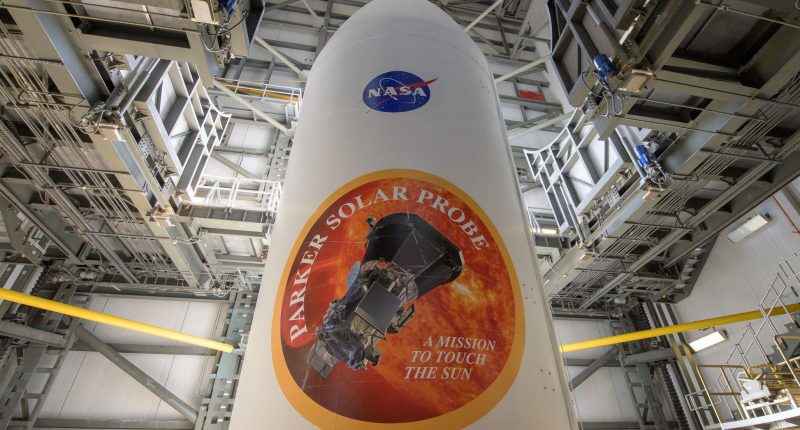THE Nasa Parker Solar Probe is set to make its closest-ever pass of the sun this year, in what scientists say is a feat “equivalent to the first Moon landing”.
The probe was launched on 12 August 2018, but will fly past the sun at 435,000mph, just 3.8million miles from the ‘surface’, on 24 December 2024 in a bid to take the first-ever sample of a star.
Parker will fly more than seven times closer to the sun than any other spacecraft in human history.
“We are basically almost landing on a star,” Nour Raouafi, a scientist on the project, told the BBC.
“This will be a monumental achievement for all humanity. This is equivalent to the Moon landing of 1969.”
The probe will gather measurements and images to help scientists learn more about where solar wind comes from, and how it’s evolving.
READ MORE ON SPACE
This will also help scientists with forecasting changes in the space environment, which can affect life and technology here on Earth.
Solar wind – also known as coronal mass ejection – is what forms Aurora displays when it interacts with Earth’s magnetic field.
But these massive clouds of charged solar particles can wreak havoc on Earth’s satellite communication systems and radio signals.
Dr Nicky Fox, Nasa’s head of science, told the BBC that they “don’t know” what they’ll find in the mission, “but we’ll be looking for waves in the solar wind associated with the heating.”
Most read in Tech
“I suspect we’ll sense lots of different types of waves which would point to a mix of processes that people have been arguing over for years,” she added.
Solar storms: the consequences
Learning more about solar weather can help inform important decisions here on Earth.
The mission comes to a head as the sun enters the peak of its 11-year cycle this year – what’s known as the solar maximum.
As the Sun ages through the solar maximum of cycle 25 – the stage we’re at now – the frequency and strength of solar flares and coronal mass ejections grow more powerful.
It’s possible that a powerful solar wind event could spur a global internet blackout, Nasa and other international researchers have warned.
In 1859, records suggest an intense geomagnetic storm created Auroras all across the world, which became known as the Carrington Event.
If a flare of this strength were to strike Earth today, the effects could result in a worldwide blackout and severely damage communications systems.
In this event, people could be forced to go offline for months or even years.
Find out more about science
Want to know more about the weird and wonderful world of science? From the Moon to the human body, we have you covered…










